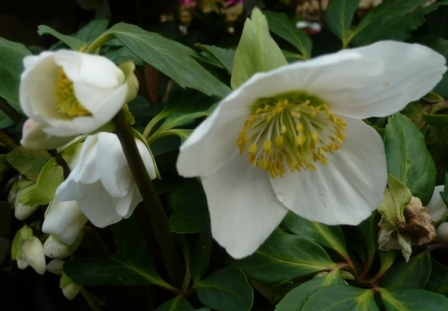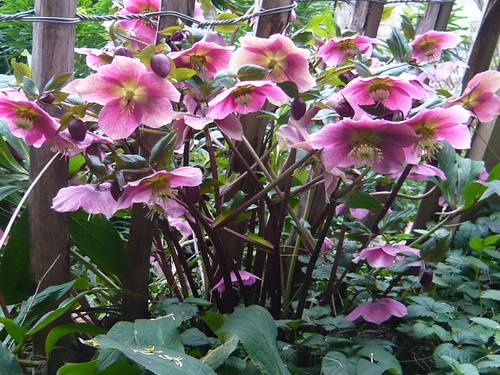Hellebores and I
I used to think the stinking hellebore was the main hellebore plant. It has its place but on the compost heap. The Christmas rose on the other hand is a fine plant well worth cultivating. (Hellebore foetidus is a compact, evergreen perennial with finely divided elegant foliage and green flowers.)
The better loved Hellebore niger or the Christmas Rose or Lenten roses produce the white flowers similar to those shown below.

Springing in to Action
I will be cutting out the old leaves of the colourful hybrids and the Christmas rose. why?
- The flower stems will grow before the new seasons leaf to reveal flowers so that I can see them,
- It exposes blooms so insects can pollinate them more easily
- To reduce places for bud eating rodents to hide
- And reduces infection from leaf spot carried over from year to year
Below is a hybrid Hellebore spotted in York Minster grounds last year.
What the experts say
‘Hellebore viridis is native to the British Isles with two subspecies, viridis and occidentalis. They both have twelve to twenty leaf divisions and usually have dark green flowers. Hellebore X hybridus has three subspecies – orientalis which has creamy-white flowers, abchasicus with reddish-pink flowers and guttatus with spotted flowers’. Broadview Gardens holder of the National Collection of Hellebores
Seed sowing tips from Christopher Lloyd; Seeds fall from flower capsules in May or June and germinate the following winter. Collect and sow straight away on the surface of John Innes seed compost. As soon as they germinate move to a cold greenhouse and prick out when the first true leaf appears. Hellebores orientalis, foetidus and argutiflora are prolific self sowers and I often find good self sown plants under the leave that I clear away in the trim .


